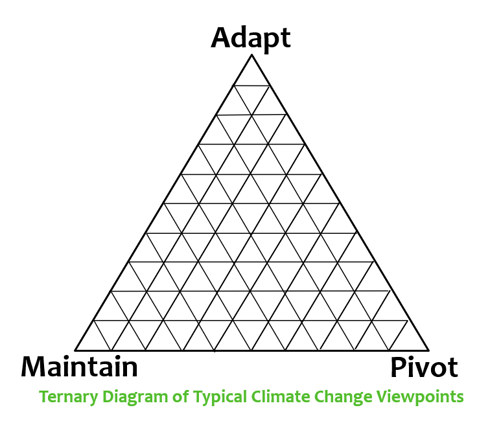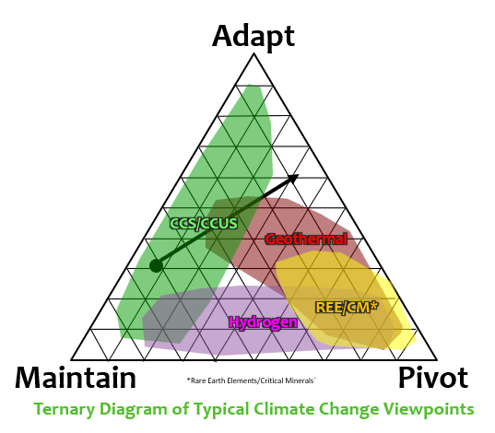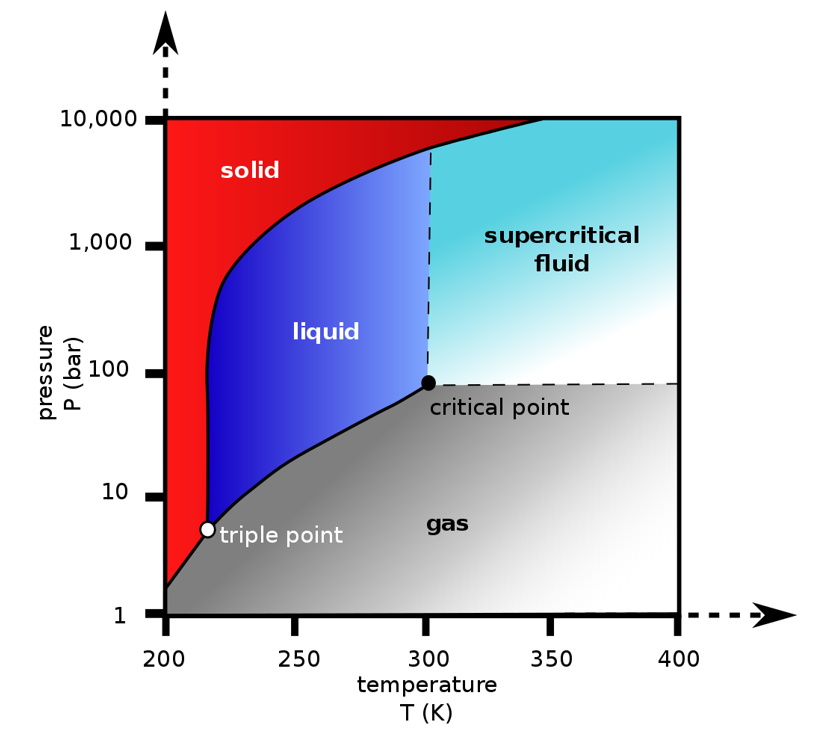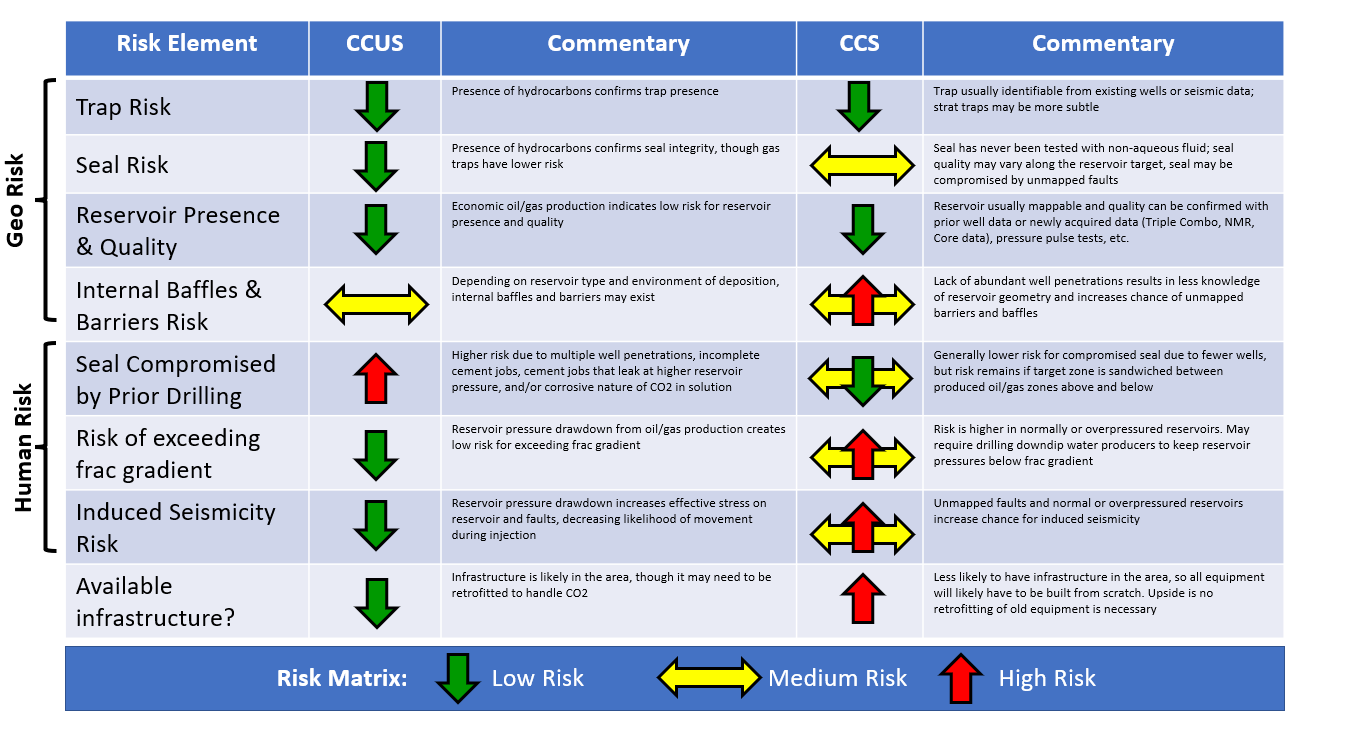Maintain, Pivot or Adapt?
As someone who has studied ancient periods of global climate change in grad school (specifically OAE2 during the Cretaceous) AND worked in the oil and gas industry for decades, I have always felt like a bit of an oddball. On one hand, I feel like the evidence for global climate change from anthropogenic green house gas emissions to be quite compelling. On the other hand, I can't deny that fossil fuels have a central role in the global economy, and a rapid transition away from it is likely to have unintended consequences for the economy and society writ large. When I ask my oil and gas buddies how they feel about it, I usually get a shoulder shrug, with no clear consensus about what should be done. I also notice the adversarial relationship between those interested in a transition away from oil and gas vs. those who believe we must increase, not decrease, those activities.
With that in mind, I have created a ternary diagram (as geologists are wont to do) to describe the different perspectives on the impending energy transition...or, perhaps more accurately, energy diversification. I call this the AMP Diagram, as it covers the spectrum of 3 different approaches: Adapt, Maintain and Pivot. My goal is not to judge right or wrong, merely to describe the typical beliefs and behaviors for each one of these groups that I have observed over the years. Also, many of us may use several of these approaches as we diversify our energy sources, and thus will plot in the center of the triangle, not at the vertices. Let's dig in to what each of these folks typically value and believe.

1) Maintainers
- Maintainers believe we need to maintain, or increase, our oil and gas production, as it is a very useful energy resource that has benefited mankind for more than a 100 years. It is common for maintainers to work in the fossil fuel industry, industry that rely heavily on fossil fuels, investors and economists.
- They tend to focus on the positive impact of oil and gas on local communities, particularly where oil and gas operations occur. This includes the direct impact via jobs creation and taxes paid, as well as the indirect impact via secondary jobs, volunteerism, etc.
- Maintainers are skeptical of climate change and/or the associated risk to mankind and the biosphere in general, and question our ability to accurately predict future climate scenarios, given the divergence or past inaccuracies of climate models. The most touted and vocal skeptics include those with technical backgrounds, such as physicists, mathematicians engineers and economists, though very few, if any, of these individuals are subject matter experts that actively work and publish on the topics they critique.
- Pivoters believe that damage from climate change is imminent, and we must switch to non-fossil fuel energy resources as quickly as possible
- They believe that damage has already begun, and catastrophic consequences await the world over the long term if we fail to act immediately
- They tend to view wind and solar as the main energy resources of the future, and eschew nuclear, fossil fuels or carbon abatement as ways to deal with climate change. They shy away from conversations around the downsides of 'green' energy sources like wind or solar, and insist that the lack of global shift towards these energy sources is routed in political dysfunction and/or corrupt corporate lobbyists.
- Pivoters also tend to be some of the most vocal NIMBY (Not In My Back Yard) protesters for any kind of developments, both 'green' and fossil fuel-related. This, in part, leads to offshoring of those activities to countries that lack in safety and ethical standards...Google "artisanal mining" and you will see exactly what I mean.
3) Adapters
- Adapters have a hybrid view. They agree that the potential impacts of climate change are likely serious, but they believe this challenge is bet met through adaptation.
- They think that we should get to work on mitigating against the worst aspects of climate change, including incentivizing populations to move away from at-risk coastal area, sequestering CO2 underground, and gradually transitioning away from oil and gas to prevent an economic disaster from occurring.
- Adapters can be thought of as indecisive, as their views do not fit neatly into a singular political viewpoint, and are sometimes viewed as traitors by both the Maintainers and Pivoters for not strictly adhering to the Maintain or Pivot worldviews. Adapters can be overly optimistic about mankind's ability to stave off the worst impacts of climate change and how quickly/easily we can decarbonize our society.
My two cents on this topic:
In my opinion, Maintainers and Pivoters receive most of the attention in the debate, whereas Adapters are quietly active in the background getting stuff done. All groups make valid points, but all have shortcomings in their arguments. As time goes on, I believe we will see more people move towards the Adaptor strategies as the reality of the climate situation dictates it.
For the geologists in the room, I believe there is tremendous opportunity for your subsurface skills, and believe you have a crucial role to play as a Maintainer, Pivoter or Adapter! I have overlain some colored polygons indicating where different energy transition opportunities fall, as well as a black arrow showing my current trajectory. As you can see, no matter where you fall, opportunity abounds.

So, what are your thoughts? Where do you fall on the diagram, and why?
No matter where you fall on this diagram, The GeoIntegra Group has decades of subsurface experience in a variety of settings. Reach out to us today to see how we can help you achieve your energy diversification goals!

 By
By


